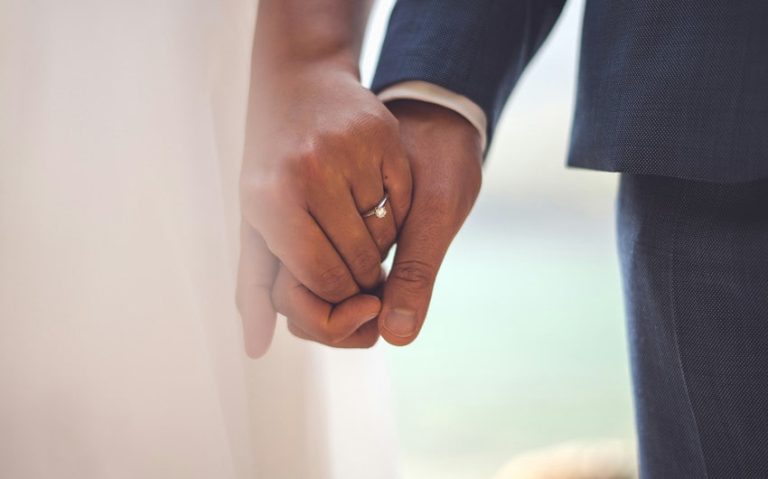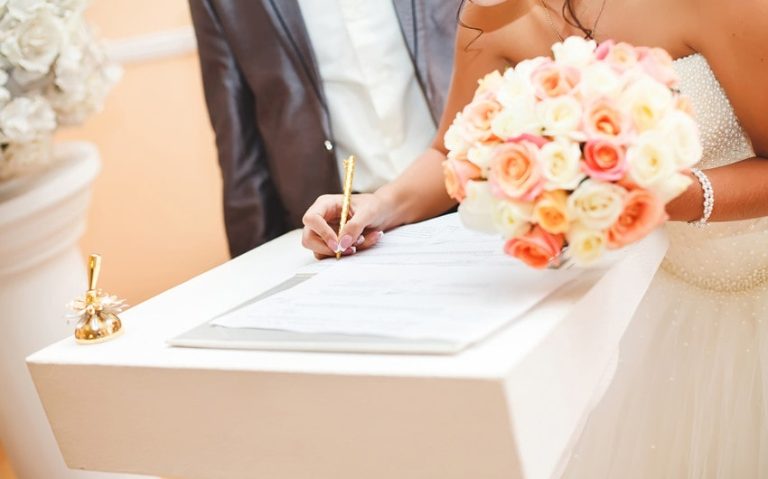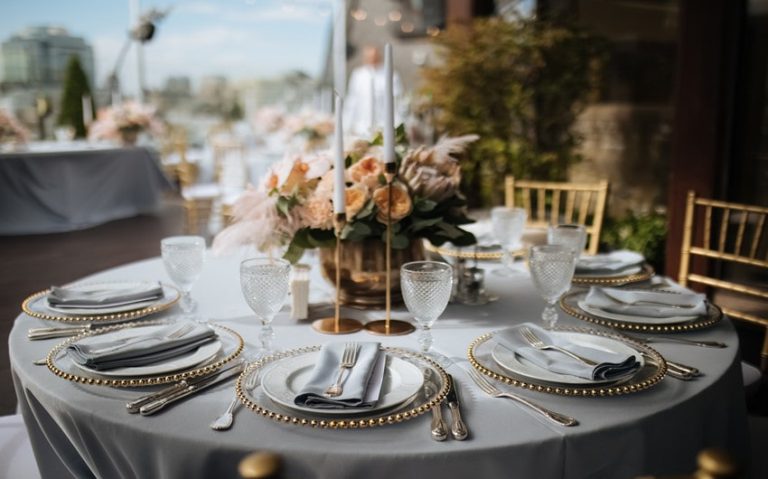Weddings today range from ultra-traditional church ceremonies to rooftop elopements where the only guests are a photographer and a dog in a tux. But how did we get here? Why do some people walk barefoot down the aisle on a beach while others spend years planning black-tie extravaganzas? Let’s break it down, tracing weddings from ancient roots to modern makeovers, all while uncovering the quirky stops along the way.
From Sacred Bonds to Strategic Moves
Long before weddings became a chance to stress over seating charts, they were all about practicalities. In ancient times, tying the knot wasn’t about love or even partnership. Marriage served as a way to secure alliances, land, or even peace treaties. Ancient Mesopotamians and Egyptians viewed marriage as a social contract—less about “happily ever after” and more about keeping the family dynasty intact.
The Romans brought their own flair, shifting from arranged unions to a somewhat more personal approach. Still, the bride and groom weren’t exactly the stars of the show. Weddings were community affairs meant to strengthen neighborhoods, villages, or entire empires. The ceremony was steeped in tradition, from sacred fire rituals to symbolic hand-tying, but romance? Barely a footnote.
It wasn’t until the Middle Ages that love started sneaking into the equation. Thanks to courtly love—a trend made popular by poets and troubadours—marriages slowly began to reflect emotional connections, at least for the upper classes. Even so, for most people, weddings were still practical matters. Love, if it existed, was a bonus.
When Church Bells Took Over
What we think of as wedding traditions today owe a lot to medieval Europe. By the 12th century, the Church stepped in and declared marriage a holy sacrament. This gave weddings an entirely new meaning, layering them with religious rituals that emphasized unity under God.
The white dress became a thing centuries later, though it’s often misattributed to Queen Victoria. In truth, brides from different cultures wore specific colors to symbolize fertility, prosperity, or purity. Red was big in Asia, while blue represented fidelity in parts of Europe. The white dress was more about wealth than purity—only the rich could afford fabric that wouldn’t be dyed or reused.
The rings? That’s an ancient custom borrowed from the Egyptians, who believed the circle symbolized eternity. But as the Church gained influence, even rings became spiritual markers, not just shiny accessories. Every tradition we associate with weddings—flowers, vows, veils—was born out of a mix of cultural mashups and religious shifts over hundreds of years.
The Industrial Revolution Changed Everything
As cities grew and industrialization took hold, weddings began to reflect a new era of individuality. For the first time, ordinary people could save up for a dress they wouldn’t wear again or host a small reception for friends and family. The middle class brought a whole new flavor to weddings, ditching strictly ceremonial styles in favor of something more personal.
Photography, which emerged in the mid-1800s, changed the game. Couples suddenly had a reason to dress their best—those wedding photos weren’t just keepsakes; they became heirlooms. Around the same time, wedding announcements and printed invitations started circulating among social circles, giving rise to the idea of weddings as not just a family affair but a public celebration.
Even the food got fancier. Cakes grew taller, dinners more elaborate. By the early 20th century, weddings were no longer just a rite of passage—they became full-on productions, complete with trends and, eventually, an industry that saw endless opportunities to monetize love.
Reinventing the Big Day
By the mid-1900s, weddings started to shift into a space where individual style met cultural movements. Post-war celebrations in the 1950s were all about optimism and tradition, with cookie-cutter ceremonies reflecting the nuclear family ideal. But then the ’60s and ’70s showed up, and everything changed.
Hippie weddings tossed aside the formalities, opting for outdoor gatherings filled with flower crowns, poetry, and barefoot dances under the stars. The boho aesthetic of these ceremonies echoed counterculture ideals, where love was free and ceremonies were stripped of rigid traditions.
Fast forward to the ’80s and ’90s, and the wedding world exploded. Big hair, big dresses, and even bigger receptions became the standard. It wasn’t just about the couple anymore—it was about spectacle. Brides embraced individuality but stayed within the lines of tradition, a balance that kept weddings iconic yet familiar.
Why Modern Weddings Are All About Breaking Rules
Today, weddings are almost unrecognizable compared to their early counterparts. From Nashville to NY or Palm Springs wedding venues, couples are crafting experiences that reflect their values, quirks, and shared stories. Some ditch the aisle entirely, opting for a mountaintop or backyard ceremony. Others blend cultural traditions, creating something new while honoring their roots.
Social media is a huge driver behind this shift. Instagram-worthy moments influence everything from floral arrangements to guest attire, making weddings less about rituals and more about curating a standout experience. Trends come and go at lightning speed—micro-weddings, sustainable ceremonies, even elopements in Vegas with custom playlists.
At the same time, the pandemic reshaped how we think about weddings. With large gatherings impossible for a while, couples leaned into smaller, more intimate celebrations. This wasn’t just a temporary trend—it permanently altered how people approach their big day.
Modern weddings are a rejection of one-size-fits-all traditions. They’re about personality, individuality, and, in some cases, simplicity. Whether that means hosting a pop-up wedding or incorporating TikTok dances into the reception, the rules are officially out the window.
Why It All Comes Full Circle
As much as weddings have evolved, there’s something timeless about them. They’ve always been a way for humans to mark life’s big moments, whether it’s sealing a political alliance or sharing vows under a neon sign.
The biggest shift, though, might be this: modern couples prioritize meaning over obligation. They’re no longer bound by expectations to follow a certain formula. Instead, they’re looking for ways to create a celebration that feels authentic to their relationship.
At their core, weddings are still about connection—whether that connection is with family, friends, or simply the person standing across from you, promising to stick around through the ups and downs. And while the format might keep changing, that’s the one thing that hasn’t wavered.
It’s Not Just a Wedding, It’s a Story
Every wedding, from ancient times to today’s eclectic versions, tells a story. It might be about survival, love, tradition, or rebellion, but it’s always a reflection of the people and the culture that created it.
So whether you’re dancing under disco balls, saying “I do” in sneakers, or walking down the aisle in your grandmother’s sari, know this: you’re part of a history that’s as old as humanity itself—constantly changing, always meaningful, and uniquely yours.




